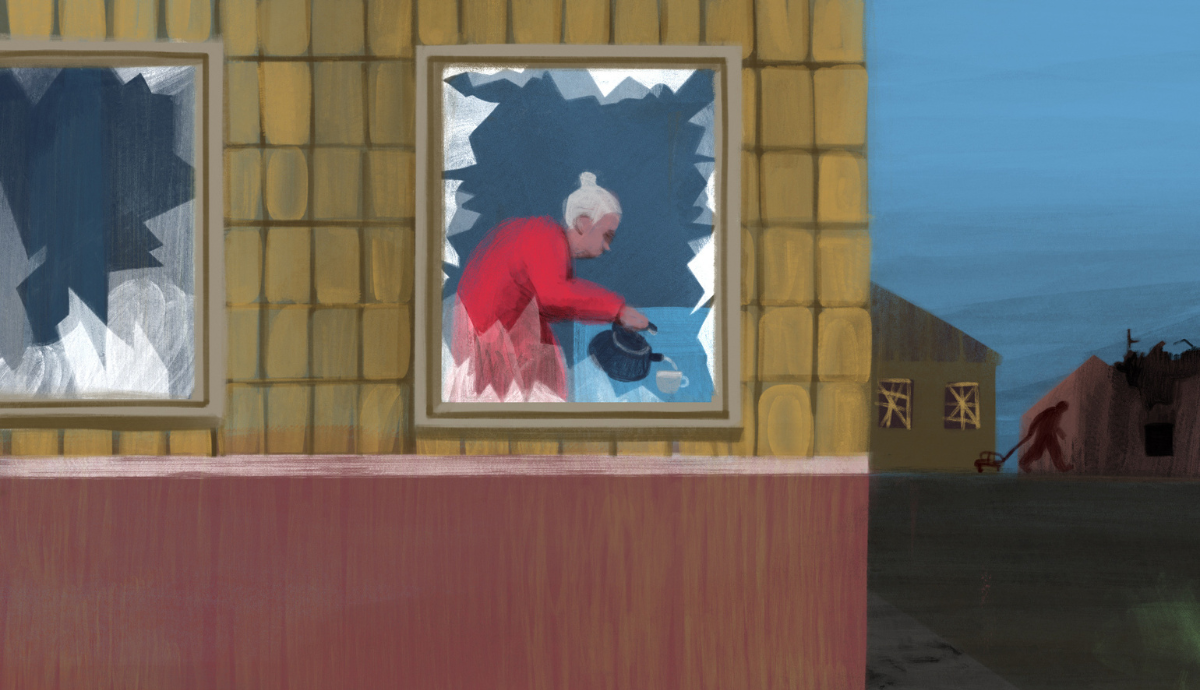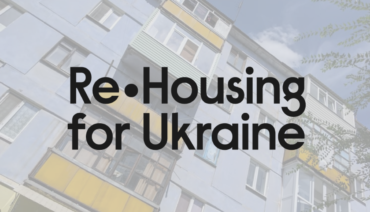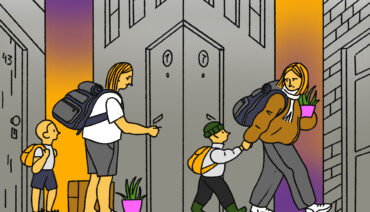
Introduction
Access to housing remains one of the cross-cutting issues faced by various social groups in Ukraine. The full-scale Russian invasion has made the need for housing more urgent and deepened existing problems in the housing sector. Today, housing is one of the most affected sectors of the economy. According to the Government of Ukraine and international organizations, as of December 2024, about 13% of the entire housing stock in Ukraine had been damaged or destroyed, affecting over 2.5 million households. The investment required in the housing sector is estimated at approximately 83.7 billion dollars.
That said, challenges in the housing sector are not the same across the entire territory of Ukraine. In hromadas near the frontline, housing difficulties are exacerbated by proximity to the frontline, frequent bombing, and in some cases by the experience of occupation. As a result of being close to the combat line and/or the border with Russia, some hromadas suffer frequent destruction and damage to the housing stock. In addition, these hromadas are often the first place where internally displaced people arrive. That is why the task of these hromadas is to provide shelter after evacuation or to accommodate people who decide to stay in the hromada. Local government bodies in hromadas near the frontline have to overcome three types of challenges in the housing sector: 1) those that the hromada had before the full-scale invasion, 2) those that arose in most hromadas of Ukraine as a result of the full-scale war, and 3) those caused by proximity to the frontline.
The main challenges faced by rural hromadas near the frontline include: regular bombing and the urgent need for public safety and civil protection; a high degree of damage and a large number of destroyed buildings; mine contamination of territories in hromadas that have experienced occupation; infrastructure damage; lack of water supply, gas, and electricity, limited access to drinking water; problems with transport connections, shortage of vehicles, high travel fares; shortage of personnel and excessive workload; budget reduction; changes in the population composition, particularly an increase in the share of elderly people; an increase in the number of internally displaced people; low level of accessibility in buildings and public spaces.
In these conditions, there is an urgent need for emergency response. At the same time, the resources of hromadas near the frontline remain limited, which complicates the transition to the implementation of sustainable solutions. Our study aims to examine the housing situation in frontline hromadas, what kind of assistance they need, and whether existing policies and programs take into account the challenges and context of frontline hromadas.
Methodology
The research covered two fields: social protection and housing in rural hromadas near the frontline. The aim was to describe the context and challenges of rural hromadas near the frontline in the fields of social protection and housing, to determine the ways to support the recovery process and the transition to sustainable solutions in these hromadas. To publish the obtained data, we divided the research findings into two publications: Social Protection in Rural Hromadas Near the Frontline and Housing in Rural Hromadas Near the Frontline. This publication presents an analysis of the housing sector and housing policy in rural hromadas near the frontline.
Key objectives of the study:
- To examine the general context and challenges in the activities of local government bodies of rural hromadas near the frontline.
- To find out which challenges and difficulties are faced by rural hromadas near the frontline in the field of social protection and housing.
- To research the steps that can be taken by state authorities as well as international and Ukrainian non-governmental organizations to support hromadas in providing for the population’s needs.
- To examine the feasibility of the transition from humanitarian response to long-term sustainable solutions in the fields of social protection and housing.
To carry out these tasks, we chose a qualitative method for both data collection and data analysis. Data collection involved conducting semi-structured in-depth interviews. In collaboration with IMPACT, our international partner organization, 4 hromadas were selected to more comprehensively examine the current situation with social protection and housing in rural hromadas near the frontline using their examples. In addition, as part of the project, a workshop was held for frontline hromadas from different oblasts of Ukraine. The findings from the group discussions during the workshop are included in the research report findings.
The field stage of the study was conducted in November 2024–March 2025.
In total, 50 in-depth interviews were conducted within the study. Of these, 26 interviews were conducted with representatives of local government bodies from 4 hromadas in Kharkivska and Zaporizka Oblasts (Savynska, Oskilska, Komyshuvaska, and Ternuvatska Hromadas), 14 with non-governmental organizations that conducted various types of activities in these hromadas, and 10 with experts in the fields of social policy, housing, and local development.
The authors of the study conducted an exploratory visit to Savynska Hromada in Kharkivska Oblast in November 2024, during which they held in-person interviews with representatives of local government bodies. The other interviews were conducted online via the Zoom platform or by phone. Recruitment of the research participants was carried out by the Cedos Think Tank with the support of the international non-governmental organization IMPACT Initiatives.
The composition of the sample was determined by the specific characteristics of each hromada, which is why the number of interviews and the statuses of informants varied across the four hromadas. In each hromada, we conducted interviews with the head of the hromada and/or the deputy head, the head of the Department of Social Protection of the Population, the director of the Center for the Provision of Social Services, the head of the Department of Housing and Utility Services, and head of the Commission for Reviewing Issues Related to Compensation for Destroyed Real Estate. If such positions or institutions were not present in the hromada, we spoke with the people whose responsibilities included similar duties. Additionally, in some hromadas, interviews were conducted with representatives of other departments, Centers for the Provision of Administrative Services (CPASs), as well as with starostas.
The group discussions took place during the Housing and Social Protection in Frontline Hromadas workshop, which was held on February 26–28, 2025, in Kyiv. More than 20 representatives from fourteen rural hromadas near the frontline were present at the workshop:
- Malomykhailivska Hromada of Dnipropetrovska Oblast;
- Komyshuvaska, Novooleksandrivska, Mykhailo-Lukashivska, Stepnenska, Ternuvatska, Shyrokivska Hromadas of Zaporizka Oblast;
- Voskresenska, Mishkovo-Pohorilivska Hromadas of Mykolayivska Oblast;
- Yampilska Hromada of Sumska Oblast;
- Oskilska, Savynska, Starosaltivska Hromadas of Kharkivska Oblast;
- Novovorontsovska Hromada of Khersonska Oblast.
To ensure the confidentiality of the research participants, the obtained data was accessible only to the research team. The quotes used in the report have been anonymized and do not contain any information that could identify a person.
The study has a number of limitations:
- The study is not representative of all rural hromadas near the frontline. Its goal was to describe the cases of 4 hromadas, as well as to collect the experiences of other hromadas during the workshop, identify the main difficulties faced by the hromadas, and determine their needs. The ability to draw conclusions about the prevalence of problems among all rural hromadas near the frontline is limited.
- The study does not include a comparison with hromadas that are not located near the frontline. Some of the problems described in the report may not be specific to frontline hromadas and may potentially occur in other hromadas.
- Limited representation of the experience of local associations and volunteer initiatives which are not officially registered. We spoke with organizations mentioned by representatives of local government bodies during the interviews in the context of providing assistance and working with different population groups. All of them had the status of officially registered non-governmental or charitable organizations. At the same time, some local initiatives may not have official registration and may carry out unsystematic activities, so they might not have been mentioned by local authorities, and the research team did not conduct interviews with them. The activities of such initiatives require separate research.
- Uneven representation of the experiences of hromadas from different oblasts. Despite the inclusion of findings from the workshop for hromadas in the research report, this study is more representative of the situation typical for hromadas in Kharkivska and Zaporizka Oblasts. Frontline hromadas in other oblasts may face different difficulties that may not have been sufficiently covered in this study.
- This study focuses on hromadas located more than 15 km from the combat line. The findings of this study cannot be extrapolated to hromadas located closer to the frontline, where, in particular, mandatory evacuation of families with children has been declared. These hromadas may face different problems and needs that are not covered by this study.
Conclusions
In this study, we focused on the challenges and needs faced by frontline rural hromadas in the housing sector. We also examined the work of non-governmental organizations and their cooperation with hromadas near the frontline on housing issues.
Housing sector challenges in rural hromadas near the frontline have worsened since the start of the full-scale invasion. These hromadas face a dual burden: to the pre-existing problems common to other hromadas in Ukraine, additional issues have been added, related to the full-scale war and their location in frontline areas. A significant portion of housing in hromadas near the frontline is destroyed or damaged, and the number of people in need of housing has increased due to forced displacement and destruction. Local government bodies are dealing with these situations with limited resources. They function under conditions of reduced hromada budgets, a lack of specialists, security challenges, and uncertainty regarding the state’s plans for the recovery of specific settlements.
In rural hromadas near the frontline, no new construction is taking place, and almost all housing was built before 1990. Most of the housing stock consists of detached houses. The existing multi-story buildings have outdated utility systems and rooms that are in poor condition.
There is abandoned housing in the hromadas, as well as houses whose owners have lived in other settlements or countries for a long time. However, for various reasons, hromadas do not use these houses to accommodate IDPs or people who have lost their homes. In particular, this is due to the fact that abandoned houses are not in municipal ownership and require major repairs. As for the homeowners who have not lived in the hromada for a long time, they are not always willing to rent their houses out to other people.
The level of accessibility, both in housing and in public spaces of the hromadas overall, is low. This creates significant difficulties for people with limited mobility. Representatives of local government bodies were generally aware of this problem but shared that they would not be able to resolve it within the limits of the hromada’s current budget.
As a result of the war, in some hromadas around 90% of the housing stock is damaged or destroyed. At the same time, according to study participants, comprehensive reconstruction is not taking place. The work and measures currently being carried out are more of a targeted or emergency response to bombing. The implementation of such repair work also faces a number of problems. In particular, these include a lack of qualified workers, the absence of repair crews in the hromadas, and the unwillingness of crews from other towns or cities to come to frontline areas.
In some hromadas, Commissions were established to review issues related to providing compensation for destroyed or damaged housing. In many cases, working in these Commissions became an additional workload for the existing staff of local government bodies. This leads to staff being overworked.
Residents of frontline hromadas mostly receive funds for housing reconstruction through the eRecovery program. Non-governmental organizations also provide support in this process. NGOs often assist specifically with non-complex repairs by providing construction materials and sometimes even by organizing the work of crews. However, according to representatives of local government bodies, assistance from NGOs is not consistent. However, hromadas need constantly available opportunities to request materials or support in organizing repair work.
The information obtained during the study indicates that people often face difficulties in trying to receive compensation for damaged or destroyed housing. For instance, difficulties arise in cases of repeated destruction due to the inability to confirm the results of the previous repair; due to the absence of title documents or a technical passport, or improperly registered housing in cases where two separate households live in one house divided into two parts; and due to the lack of settlement status in the localities where people reside.
In addition, informants noted the need to regulate the issue of restoring damaged or destroyed non-residential buildings belonging to residents of rural hromadas, as these structures are often the foundation of households’ professional activities.
Given the situation described above, local government bodies generally do not have the capacity to assist with the accommodation of people in need of housing. Therefore, people who have lost their homes due to hostilities or forced displacement mostly live with relatives. Some of these people also live in privately rented housing, are placed in vacant housing with the consent of the owners, live with strangers, and, in rare cases, purchase housing themselves. When renting housing from private individuals, people face situations where the rent is too high, the rooms are in poor condition, or the unit lacks utilities. In rural hromadas, people rarely sign rental contracts between tenants and landlords. Another important point is that, despite the availability of vacant housing, the supply on the rental market in rural hromadas near the frontline is quite low. Therefore, people are not always able to find housing and are forced to relocate to another hromada.
Social housing is generally non-existent in rural hromadas near the frontline. According to representatives of local government bodies, some hromadas have public housing intended for people in need of social protection or people of certain professions, but the number of such units is limited. Study participants emphasized the relevance of creating social housing for their hromadas. They believed this was appropriate to achieve in various ways: through the construction of new housing or through transferring existing abandoned housing into municipal ownership and carrying out major repairs. Alongside this, they raised the issue of the need for an inventory of the housing stock, as hromadas do not always have up-to-date information about available housing, its condition and owners.
Frontline rural hromadas actively cooperate with non-governmental organizations. This cooperation takes place in the field of reconstructing housing and civil infrastructure. However, as noted by informants, there are certain problems in the process of this cooperation. One of the main issues is the unsystematic and temporary nature of assistance. In addition, non-governmental organizations support the population only with minor repairs, lacking the capacity or resources to carry out more complex and large-scale reconstruction work.
During the study, we also asked representatives of local government bodies about the support their hromadas needed most from non-governmental organizations. Study participants pointed to the need for assistance with social housing, particularly in terms of its furnishing and construction. In addition, representatives of frontline hromadas expressed the need for support in the areas of architectural expertise and the development of project-estimate documentation. Support in organizing repair work, namely practices when NGOs independently find repair crews, is also important for the hromadas.
According to study participants, one of the still-unresolved problems is the lack of clarity regarding plans for the reconstruction of destroyed settlements, as well as the priorities and methods of reconstruction. This is especially relevant for de-occupied frontline villages to which only a few households have returned. In such settlements, the cost of housing and utility services is significantly higher than in others, which complicates the provision of necessary services to the population. In this context, representatives of local government bodies expressed concern about the plans for such settlements and whether a decision will be made to rebuild them.
For rural hromadas near the frontline, the transition from humanitarian response to long-term solutions is complicated by the security situation. Although representatives of local government bodies recognize the need for housing, particularly social housing, large-scale construction in these areas is not possible. That is why the issue of inventorying existing real estate and converting it into housing for internally displaced people is especially relevant for frontline hromadas. These hromadas require more comprehensive and sustainable support in the housing sector. The highest priority areas are: 1) the restoration of damaged and destroyed buildings (both residential and non-residential); 2) support in providing housing for people who lost it due to the war; 3) consistent access to assistance in obtaining construction materials and finding crews to restore houses.
Support Cedos
During the war in Ukraine, we collect and analyse data on its impact on Ukrainian society, especially housing, education, social protection, and migration
















